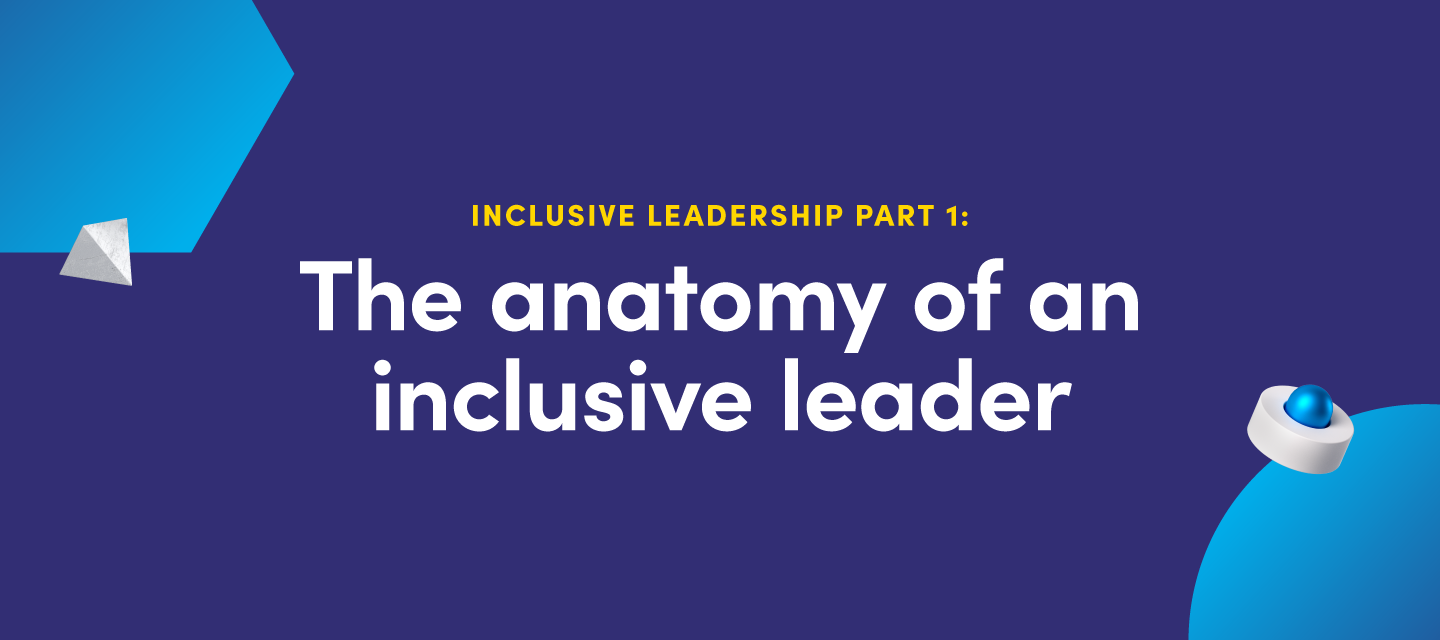Hello everyone! My name is Dean Delpeache and I’m the Director of Talent and Diversity at Fiix. Over the next four weeks, I’ll be posting all about inclusive leadership and then hosting a workshop on the topic. (Check out this post from
What is inclusive leadership?
Think about what motivates you at work. Maybe it's mastering your craft or making a difference. Maybe it’s the paycheque.
Some of the people you work with might be motivated by the same general things. But never in quite the same way. That’s because everyone at your company is unique with diverse upbringings, goals, and beliefs.
Understanding this, and using it to guide your decisions, is the foundation of inclusive leadership. Inclusive leadership all about finding out who someone is, what has shaped them, and how that affects them at work so you can create an environment that brings out the best in everyone.
Why you should care about inclusive leadership
The benefits of inclusive leadership are well-researched. It’s been shown that teams are more likely to hit their goals when they’re diverse and managed inclusively. Here’s why:
-
Diverse teams contribute diverse ideas
-
Diverse ideas mean more ways to solve a problem and improve processes
-
Inclusive leadership encourages people to express those ideas and for leaders to factor them into their decision-making
-
When people feel that they’re being heard, understood, and making a difference, they are motivated to keep contributing
This gives you an advantage over more homogenous, less inclusive teams that discourage contrasting ideas, even if they don’t mean to. They approach projects and problems from a narrow lens and are less likely to find better ways to work.
Here are more quick stats on the benefits of adopting inclusive leadership practices:
-
85% of businesses say that diversity drives the most innovative ideas
-
80% of workers indicate inclusion is important when choosing an employer, while 30% have left an organization for a more inclusive one
-
Companies with inclusive leadership practices generate up to 30% percent higher revenue per employee
The characteristics of inclusive leadership
There are six characteristics that inclusive leaders have, which I’ve outlined below:
Commitment
Inclusive leaders recognize that diversity and inclusion are important to creating great outcomes. They are deliberately inclusive in all facets of the workplace and the relationships in it.
Courage
An inclusive leader shows their commitment to inclusivity using words and actions. They stand by this commitment even when it’s not easy. They acknowledge that they don’t have all the answers, accept criticism, and consider ideas that are different than their own.
Curiosity
Inclusive leaders actively learn about different worldviews and cultures, and the way they impact their teams. They’re always challenging their worldview by researching, asking questions, and being open to new information.
Cognizance of bias
Inclusive leaders understand that personal and organizational biases influence their decisions. They make a deliberate effort to identify biases and develop strategies to prevent them from impacting their actions.
| How to identify and manage personal bias Personal bias is any way of thinking, acting, or talking that favors one thing, person, or group over another. We all have biases. They’re normal. But negative biases are hurtful and hamper everyone’s ability to do their best work. The first step to address bias is to realize it’s happening. You can do this by developing deeper relationships with colleagues. When you learn about the factors that shape a person’s identity, you develop respect and understanding for the way they work. This changes the way you think and behave toward them. For example, if someone is behind on work, you might assume they’re lazy. But they might be a tired new parent. When you know this, you can catch your bias before it impacts you. |
Cultural intelligence
Inclusive leaders are aware of how their peers and colleagues see and interact with the world. They use that understanding to develop deeper relationships with those they work with.
Collaboration
Inclusive leaders know how to help team members understand each other’s worldviews. They develop an inclusive, productive team while respecting everyone’s motivations, culture, and true self.
What you can do tomorrow to start being an inclusive leader
Here are four things you can start doing tomorrow to develop inclusive leadership:
-
Make a personal commitment to developing diversity and inclusion on your team. Write it down. Say it out loud. Do this before you even walk into work.
-
Research common, exclusionary language. For example, a meeting is often called a pow-wow. But this word is a sacred part of Native American culture and is exclusionary.
-
Make a list of everything you do as a leader, like running meetings, and think of ways to make them more inclusive.
-
Get an accountability partner at work. Meet with them regularly to talk about your goals, progress, and roadblocks.
How to measure your progress toward inclusive leadership
You can’t improve something you don’t measure, so here are two ways to track your progress toward inclusive leadership:
-
Create a 360 review process. A 360 review is when you get feedback from direct reports and peers as well as your manager. These reviews are anonymous and include questions about leadership styles and inclusivity.
-
Do an Intercultural Development Inventory (IDI) assessment. This assessment measures your cultural awareness and competency so you can identify opportunities for improvement.
What you can do next
Here are two resources if you want to dive deeper into inclusive leadership:






